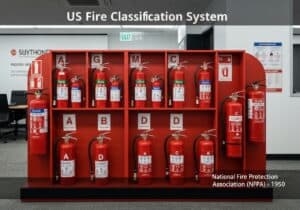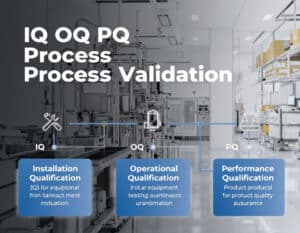Are you making the most strategic decisions for your annual R&D budget planning? Or could your approach to OPEX and CAPEX be holding you back?
In the world of financial planning, especially in R&D, knowing the difference between Operating Expenses (OPEX) and Capital Expenditures (CAPEX) is key. OPEX pays for daily needs like salaries, utilities, and rent. Meanwhile, CAPEX means spending on big things. These could be lab tools, buildings, and tech that help a company for years. Getting this right is vital for managing your budget well.
Planning finances well in R&D means understanding both OPEX and CAPEX. You also need to know their benefits and challenges. Doing so helps companies run smoother, save on taxes, and make more money over time. Let’s look more into planning your annual R&D budget with OPEX and CAPEX in mind.
النقاط الرئيسية
- Distinguishing between OPEX and CAPEX is crucial for effective annual R&D budget planning.
- OPEX refers to day-to-day operational costs necessary to keep the business running.
- CAPEX includes long-term investments in physical and intangible assets like machinery, buildings, and R&D.
- Effective financial planning enhances operational efficiency and provides significant tax advantages.
- Understanding and differentiating these expenses can lead to better strategic budget management and long-term profitability.
Understanding OPEX and CAPEX in Budget Planning
In budget planning, knowing the difference between Capital Expenditures (CAPEX) and Operating Expenses (OPEX) is critical. So, what is OPEX? It’s about the costs needed to run a business daily. This covers employee salaries, utilities, and rent. OPEX costs are fully deductible in the year they’re made, which helps with financials right away.
On the other hand, CAPEX involves big investments in assets that benefit the business over several years. This includes things like machinery, buildings, and IT setups. The costs for these assets are spread out over time. This is because they’re depreciated over their useful life, affecting financial statements differently than OPEX.
Grasping these concepts lets companies plan their budgets with strategy. For example, moving IT costs from CAPEX to OPEX through service models provides budget predictability. It also spreads costs. This is key for IT and finance departments to manage costs for on-site and cloud services well.
Below is a comparison of OPEX and CAPEX to help in better budget planning:
| الفئة | OPEX | النفقات الرأسمالية |
|---|---|---|
| التعريف | Day-to-day operational expenses | Long-term investment in assets |
| أمثلة | Salaries, Rent, Utilities | Machines, Buildings, IT Infrastructure |
| Accounting Treatment | Fully deductible in the year incurred | Depreciated over useful life |
| Impact on Taxes | Immediate tax deduction | Tax benefits through depreciation |
| Procurement Process | Similar procurement process as CAPEX | Similar procurement process as OPEX |
By correctly الفرز expenses, businesses can improve their financial health. This ensures they grow steadily and operate efficiently.
Key Differences Between OPEX and CAPEX
Understanding the differences between OPEX and CAPEX is key for good budget planning. This is especially true in research and development. How taxes work and how often you spend on each can really impact how well a company does financially.
The way OPEX, or Operating Expenditure, is handled with taxes is different from CAPEX, or Capital Expenditure. OPEX includes things like rent, salaries, and utility bills. You can fully deduct these costs the year you spend them. This helps lower the taxes a company has to pay every year, helping its short-term profits. On the other side, CAPEX is about big investments such as real estate and equipment. These aren’t deducted right away. Instead, their cost is spread out over the life of the asset, spreading out tax benefits too.
OPEX and CAPEX differ in how often and how much is spent. OPEX involves smaller, regular costs that keep a business running day to day. This includes paying for utilities, salaries, and supplies. These costs are vital for the business to operate smoothly and directly influence profits.
CAPEX, on the other hand, means spending more money upfront for things that will pay off over time. Upgrading software, buying new equipment, or investing in real estate costs a lot initially. These big purchases can affect a company’s cash flow and lock up working capital for a long time. Even though CAPEX can lead to long-term benefits and asset ownership, there’s also the risk that the investments might not pay off if market conditions change.
Examples of OPEX and CAPEX in R&D
Understanding how to manage costs in Research and Development (R&D) is key for budgeting. Operating Expenditures (OPEX) و Capital Expenditures (CAPEX) are both crucial. They each have a unique role in the R&D process.

- Laboratory supplies are needed for experiments.
- Salaries: What we pay researchers and their teams.
- Utilities keep the research place running.
- SaaS subscriptions are operating costs over time.
CAPEX in R&D involves big investments for the future:
- Buying special equipment for research is a big part of this.
- Upgrading technology helps research do more.
- Building more space for research activities is important.
- Patents protect new discoveries.
- Buying software is a capital cost.
Choosing between OPEX and CAPEX depends on the situation and rules of accounting. Generally, OPEX covers costs that happen during normal operations. CAPEX, though, involves more money upfront but is an investment for the future.
In R&D budgeting, it’s critical to understand these costs. OPEX is shown on the income statement and is deducted as it happens. Meanwhile, CAPEX appears on the balance sheet as assets. These are depreciated over their useful life.
The Importance of Distinguishing OPEX and CAPEX
It’s essential to understand the difference between OPEX and CAPEX for good financial reporting and planning. CAPEX involves buying long-term items like machines and buildings. On the other hand, OPEX includes everyday costs, such as salaries and rent. Each type affects financial documents in its own way. CAPEX shows up on the balance sheet as assets. Meanwhile, OPEX appears on the income statement as immediate costs.
Financial Reporting and Forecasting improves when we recognize each expense type. CAPEX boosts productivity and shows a company’s plan to grow, spreading costs over years. OPEX covers things like utility and تسويق costs. This helps companies manage cash flow and offers quick tax benefits.
Strategic Planning Considerations require clear understanding between these expenses. By doing so, businesses can match spending with long-term objectives. For example, with CAPEX, companies see better efficiency and market position over time, despite high initial costs. Meanwhile, OPEX helps maintain daily operations and economic stability by recognizing expenses right away.
When to Plan Your Annual R&D Budget
Planning when to set your R&D budget is vital. It must match the annual budget cycle and strategic goals. Doing it before the fiscal year starts is best. This approach lets you look at...
لقد قرأت 36% من المقال. الباقي لمجتمعنا هل أنت عضو بالفعل؟ تسجيل الدخول
(وأيضًا لحماية المحتوى الأصلي لدينا من روبوتات الكشط)
مجتمع الابتكار العالمي
تسجيل الدخول أو التسجيل (100% مجاناً)
اطلع على بقية هذه المقالة وجميع المحتويات والأدوات الخاصة بالأعضاء فقط.
فقط المهندسون والمصنعون والمصممون والمسوقون الحقيقيون المحترفون.
لا روبوت، ولا كاره، ولا مرسل رسائل غير مرغوب فيها.
التعليمات
What is OPEX?
A: Operating Expenses (OPEX) are costs needed for a business to run daily. This includes paying employees, utility bills, and rent. They are fully deducted in the year they happen. This reflects the company’s cost for operations.
What is CAPEX?
A: Capital Expenditures (CAPEX) are big purchases or services that last long. Things like machines or buildings. These costs are depreciated over time. This affects the company’s financials for many years.
How are OPEX and CAPEX treated differently for tax purposes?
OPEX can be deducted right away in the year it happens. CAPEX, being a big investment, isn’t deducted immediately. It’s spread out over its life through depreciation. This spreads the tax benefits over years.
Why is it important to distinguish between OPEX and CAPEX?
Knowing the difference affects financial reports. CAPEX leads to future gains and shows as assets. OPEX shows on the income statement as costs, hitting the company’s short-term profits. This helps in planning and using resources wisely, combining immediate needs with future investments.
When should an R&D department plan its annual budget?
Planning an R&D budget should be timed with the company’s operations and goals. It’s done before the fiscal year starts. This lets the company review and match it with its aims and what’s happening in the market. Being ahead helps in adjusting how money and resources are used.
How can a company balance long-term investments and operational efficiency in their budget?
Balancing OPEX and CAPEX means being efficient day-to-day while making investments for the future. This balance affects the company’s financial health and growth. It involves checking financials and making sure costs align with long-term goals.
What role does ROI analysis play in budget approval processes?
العائد على الاستثمار (Return on Investment) analysis is key to seeing the value of both OPEX and CAPEX. It helps show which is more efficient or offers more value over time. This helps in deciding how to allocate R&D budget and justifies spending.
What strategies can be used for efficient OPEX allocation in R&D?
For OPEX, it’s smart to keep the budget flexible for changes in costs. Constantly looking for savings and focusing on spending that boosts work and efficiency is important. Regular checks and adjustments help stay on track and make the most of the budget.
What techniques are used for effective CAPEX allocation in R&D?
For CAPEX, using methods like net present value (NPV) و internal rate of return (IRR) helps. These decide if big investments are worth it and match the company’s long-term plans.
Why is including safety margins in R&D budgets important?
Having a safety margin in the R&D budget is smart to handle risks and surprises. It means setting aside money for unexpected costs or overruns. This keeps R&D projects stable and ongoing, even when things change.
مسرد المصطلحات المستخدمة
Internal Rate of Return (IRR): معدل الخصم الذي يجعل القيمة الحالية الصافية للتدفقات النقدية من الاستثمار تساوي الصفر، مما يشير إلى معدل العائد السنوي المتوقع على مدى عمر الاستثمار.
Net Present Value (NPV): مقياس مالي يحسب الفرق بين القيمة الحالية للتدفقات النقدية الداخلة والخارجة خلال فترة محددة، مخصومة بمعدل معين، لتقييم ربحية الاستثمار أو المشروع.
Return on Investment (ROI): مقياس مالي يستخدم لتقييم ربحية الاستثمار، ويتم حسابه عن طريق قسمة صافي الربح من الاستثمار على التكلفة الأولية، معبرًا عنها كنسبة مئوية.
Software as a Service (SaaS): نموذج توزيع البرامج حيث يتم استضافة التطبيقات في السحابة ويمكن الوصول إليها عبر الإنترنت، عادةً على أساس الاشتراك، مما يسمح للمستخدمين باستخدام البرامج دون الحاجة إلى التثبيت أو الصيانة على الأجهزة المحلية.



























Considering the impact of emerging technologies and subscription-based models on budget planning could offer valuable insights for adapting to modern financial strategies.
how emerging technologies, such as AI and automation, can further optimize asset management and financial analysis in R&D ?
solid overview of OPEX and CAPEX, but it would be beneficial to include examples of how companies have successfully transitioned IT costs from CAPEX to OPEX
Interesting article! But Im curious, how would an economic downturn influence the balance between OPEX and CAPEX in R&D budgeting?
Interesting read, but isnt OPEX more flexible for R&D teams in terms of budget adjustments throughout the year?